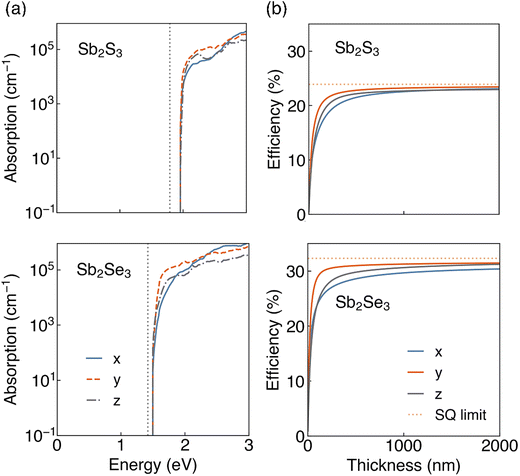 Open Access Article
Open Access ArticleCreative Commons Attribution 3.0 Unported Licence
Correction: Lone pair driven anisotropy in antimony chalcogenide semiconductors
Xinwei
Wang
a,
Zhenzhu
Li
ab,
Seán R.
Kavanagh
ac,
Alex M.
Ganose
a and
Aron
Walsh
*ab
aDepartment of Materials, Imperial College London, Exhibition Road, London SW7 2AZ, UK. E-mail: a.walsh@imperial.ac.uk
bDepartment of Materials Science and Engineering, Yonsei University, Seoul 03722, Korea
cThomas Young Centre and Department of Chemistry, University College London, 20 Gordon Street, London WC1H 0AJ, UK
First published on 6th September 2023
Abstract
Correction for ‘Lone pair driven anisotropy in antimony chalcogenide semiconductors’ by Xinwei Wang et al., Phys. Chem. Chem. Phys., 2022, 24, 7195–7202, https://doi.org/10.1039/D1CP05373F.
The authors regret that Fig. 5(b) was incorrect in the original manuscript due to a minor error in the code used for calculating the orientation-dependent radiative limit to photovoltaic conversion efficiency. The corrected figure is shown here. The optical absorption spectra of Sb2S3 and Sb2Se3 result in a weak orientation-dependent radiative limit of conversion efficiencies. When the film thickness is 500 nm, the difference between the maximum and minimum efficiencies along different directions is 1.31% and 2.40% for Sb2S3 and Sb2Se3, respectively. The authors note that the correction of Fig. 5(b) does not change the central conclusions of the paper.
The Royal Society of Chemistry apologises for these errors and any consequent inconvenience to authors and readers.
| This journal is © the Owner Societies 2023 |

